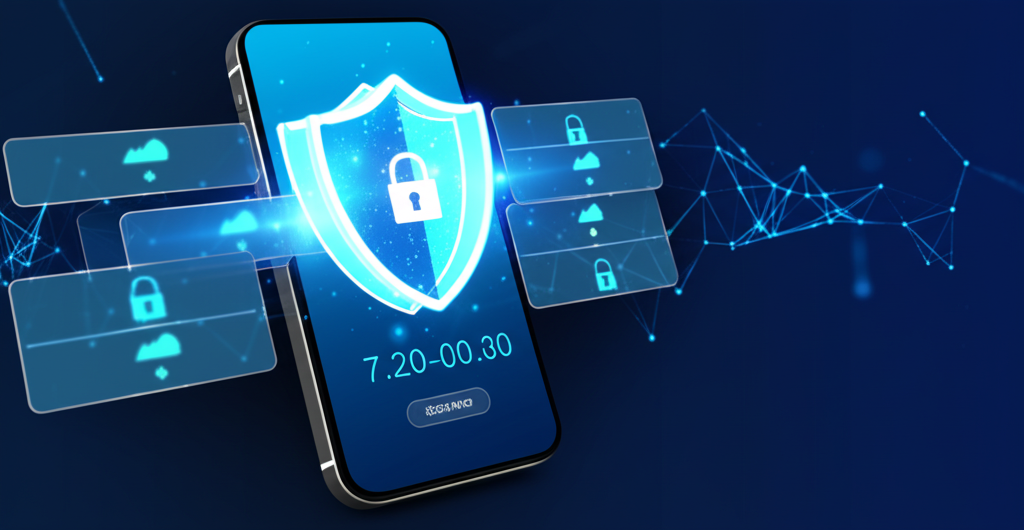Two-Factor Authentication Explained: Beyond Passwords

What is Two-Factor Authentication?
Two-factor authentication (2FA), sometimes called multi-factor authentication (MFA), is a security process that requires users to provide two different authentication factors to verify their identity. This adds an extra layer of protection beyond just a password.
The concept is simple but powerful: instead of just knowing something (your password), you also need to have something (like your phone) or be something (like your fingerprint) to gain access to your account.
Why Passwords Alone Aren't Enough
Even the strongest password can be compromised. Data breaches, phishing attacks, keyloggers, and other threats can expose your passwords regardless of their complexity. Consider these sobering statistics:
- Over 80% of data breaches involve stolen or weak passwords
- The average person reuses each password 14 times across different services
- Sophisticated phishing attacks can trick even security-conscious users
- Password spraying attacks can crack common passwords in minutes
When your password is your only line of defense, a single point of failure can compromise all your accounts. This is where 2FA comes in as a crucial second layer of security.
The Three Authentication Factors
Authentication factors generally fall into three categories:
- Something you know - This includes passwords, PINs, or security questions. This is the most common but also the most vulnerable factor.
- Something you have - This includes physical devices like your smartphone, a security key, or a smart card. An attacker would need to physically steal this item to compromise this factor.
- Something you are - This includes biometric data like fingerprints, facial recognition, or voice patterns. These are unique to you and difficult to replicate.
True two-factor authentication uses two different categories from this list, not just two different methods from the same category.
Common Types of Two-Factor Authentication
SMS Text Messages
After entering your password, a one-time code is sent to your phone via text message. While convenient, this method is vulnerable to SIM swapping attacks and should not be your first choice if alternatives are available.
Authenticator Apps
Apps like Google Authenticator, Microsoft Authenticator, or Authy generate time-based one-time passwords (TOTPs) that change every 30 seconds. These are more secure than SMS as they don't rely on your phone number or cellular network.
Security Keys
Physical devices like YubiKey or Google Titan Security Key connect to your computer or mobile device to verify your identity. These are among the most secure 2FA methods as they're resistant to phishing and require physical possession.
Biometric Authentication
Fingerprint scans, facial recognition, or voice recognition can serve as a second factor. While convenient, the implementation quality varies widely across devices and services.
Push Notifications
Services like Duo Security send a push notification to your registered device, asking you to approve or deny the login attempt. This provides a simple yes/no decision rather than requiring you to type a code.
Setting Up 2FA on Your Important Accounts
Most major online services now offer some form of two-factor authentication. Here's how to enable it on some popular platforms:
- Go to your Google Account
- Select "Security" from the navigation panel
- Under "Signing in to Google," select "2-Step Verification"
- Follow the on-screen steps
Microsoft
- Sign in to your Microsoft account
- Go to Security basics
- Select "More security options"
- Under "Two-step verification," choose "Set up two-step verification"
Apple
- Go to appleid.apple.com and sign in
- In the Security section, select "Turn on two-factor authentication"
- Follow the instructions to verify your identity
Best Practices for Using 2FA
- Use authenticator apps instead of SMS when possible for better security.
- Set up backup methods in case you lose access to your primary 2FA device.
- Store backup codes securely - many services provide one-time use backup codes for emergencies.
- Enable 2FA on all sensitive accounts, especially email, banking, and social media.
- Consider using a security key for the highest level of protection for your most critical accounts.
Common Concerns and Misconceptions
"2FA is too inconvenient"
While 2FA does add an extra step to the login process, the security benefits far outweigh this minor inconvenience. Many services also offer "remember this device" options that reduce the frequency of 2FA prompts on trusted devices.
"I'll get locked out if I lose my phone"
This is a valid concern, but most services provide backup options like recovery codes or alternative verification methods. It's important to set these up in advance and store them securely.
"2FA makes me completely secure"
While 2FA significantly improves your security posture, no security measure is perfect. It's still important to use strong, unique passwords and stay vigilant against phishing attempts.
The Future of Authentication
The authentication landscape continues to evolve. Passwordless authentication methods like FIDO2 and WebAuthn are gaining traction, potentially eliminating passwords altogether in favor of biometrics and security keys.
However, for the foreseeable future, two-factor authentication remains one of the most effective security measures available to everyday users. By implementing 2FA on your important accounts, you dramatically reduce the risk of unauthorized access, even if your password is compromised.
Conclusion
Two-factor authentication is no longer an optional security feature—it's a necessity in today's digital landscape. By understanding how it works and implementing it across your important accounts, you create a significantly stronger defense against the most common cyber threats.
Remember: your online security is only as strong as its weakest link. While a strong password is a good start, adding that second factor creates a security posture that's much more difficult for attackers to overcome.
Related Articles
The Complete Guide to Choosing and Using a Password Manager
Password managers are essential tools for online security. This guide helps you choose the right one and use it effectively.
The Future of Passwords: Are They Becoming Obsolete?
With advances in biometrics and passwordless authentication, what does the future hold for traditional passwords?